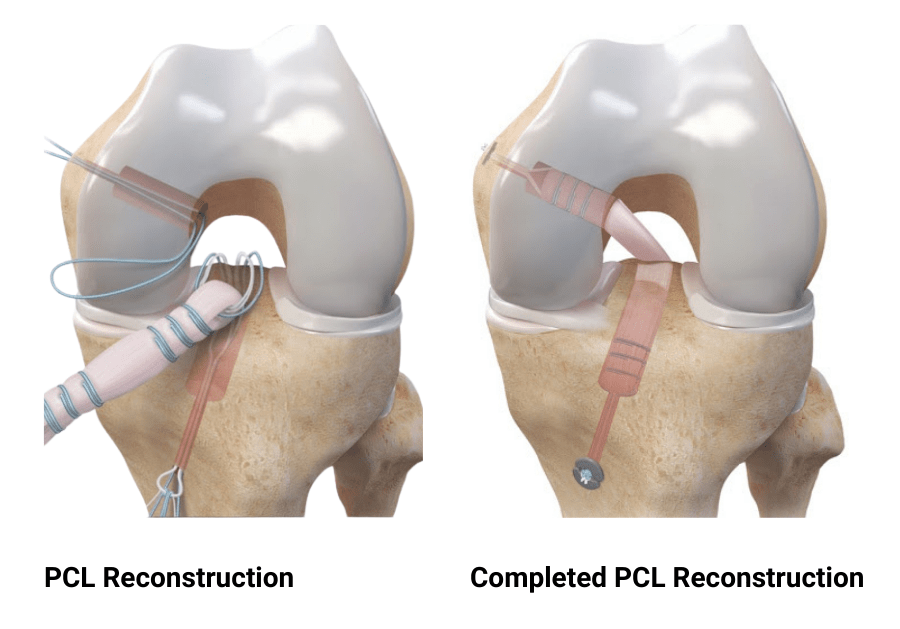What is it?
The posterior cruciate ligament (PCL) is one of the primary ligaments in the knee, connecting the femur (thighbone) to the tibia (shinbone). It is responsible for preventing the tibia from sliding backwards. PCL injuries are commonly seen in motor vehicle accidents, where the patient’s tibia slams against the dashboard. It can also occur during contact sports, such as football.
WHAT ARE SIGNS AND SYMPTOMS OF A PCL INJURY?
Common symptoms of PCL tears include:
• Pain in the back of the knee with kneeling
• Pain in the front of the knee when trying to run
• Subtle feeling of instability
Diagnosis
In the office, a complete history and physical exam is obtained. The knee is examined for any deformity or tenderness to palpation. A comprehensive test of all the ligaments is performed and oftentimes compared to the uninjured side. Imaging studies, such as an X-Ray and MRI, may be necessary to confirm the diagnosis and identify associated injuries, such as meniscal tears.
Treatment
The majority of PCL injuries can be treated non-operatively. Such treatments include rest, ice, anti-inflammatories, and physical therapy with a focus on quadriceps strengthening. Crutches and a PCL knee brace may be used initially to support the injured knee.
Surgical treatment of PCL injuries is generally recommended in individuals with persistent instability or with a multi-ligament knee injury. In many cases, the injured ligament cannot be repaired. PCL reconstruction involves placing a new ligament (graft) into the knee, which, over time, matures into the new PCL. This is typically done in an outpatient setting under regional anesthesia, allowing patients to return home the same day. In conjunction with supervised physical therapy, ACL reconstruction has been shown to support the patient’s successful return to their sport.

RECOVERY
Following surgery, patients are placed in a long hinged knee brace for six weeks and are allowed to bear weight immediately (except in cases where there is a combined meniscus root repair or cartilage repair). Physical therapy begins within the first week of surgery, with emphasis on knee range of motion. At six weeks, the brace is removed and the focus turns to gait training and strengthening. A jogging program is initiated about 3-4 months postoperatively, followed by an agility program at 5-6 months. Sport specific drills are initiated at six months and patients generally return to their sport around 9-12 months postoperatively.
ARTHROSCOPIC PCL RECONSTRUCTION
The following animation demonstrates an arthroscopic reconstruction of the PCL with a free tendon graft. Following graft preparation, small sockets are created in both the femur and tibia. The graft is then introduced into the tibial and femoral sockets. Graft fixation is performed by tensioning and tying the sutures over a button.
